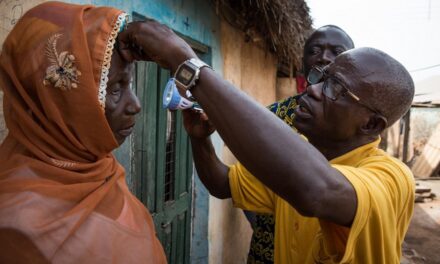A New Study Reveals an Alarming Increase in Babesiosis and Co-Infections with Lyme Disease
A recent study has highlighted an escalating public health concern in the United States: babesiosis, often referred to as “American malaria,” is spreading rapidly across the country. The disease, caused by the Babesia parasite and transmitted through tick bites, has seen an average increase of 9% per year in reported cases from 2015 to 2022. Alarmingly, many patients diagnosed with babesiosis are also co-infected with other tick-borne illnesses, including Lyme disease, highlighting the need for heightened vigilance and updated treatment strategies.
The Growing Threat of Babesiosis
Babesiosis, a tick-borne parasitic infection, primarily affects red blood cells, leading to symptoms similar to malaria, such as fever, fatigue, and flu-like symptoms. In some cases, particularly among older adults or individuals with weakened immune systems, the disease can be fatal. According to the U.S. Centers for Disease Control and Prevention (CDC), while some people remain asymptomatic, others experience debilitating symptoms that can result in severe complications or even death. The disease is primarily found in the Northeastern and Midwestern states but has been spreading, driven in part by climate change, which has increased the range and population of the ticks that carry the parasite.
A Co-Infection Crisis
The new study, conducted by researchers from Penn State Health Milton S. Hershey Medical Center and Penn State College of Medicine, analyzed clinical data from over 3,500 patients diagnosed with babesiosis between 2015 and 2022. The findings, published in Open Forum Infectious Diseases, showed that 42% of these patients were also infected with another tick-borne disease, most commonly Lyme disease. This co-infection rate was significantly higher than previous reports, signaling a more complex health crisis.
Lyme disease, caused by the bacterium Borrelia burgdorferi, is another tick-borne illness that has been increasing in prevalence. Co-infection with both babesiosis and Lyme disease raises concerns about the potential for more severe illness, although the study found no significant differences in mortality rates between patients with babesiosis alone and those with co-infections.
However, the research did reveal that patients with babesiosis alone were at a higher risk of death. Surprisingly, the study indicated that patients with both babesiosis and Lyme disease did not experience worse outcomes, which suggests that the presence of Lyme may, in some cases, “boost” the immune response, helping to fight off the Babesia parasite more effectively.
Treatment Challenges and Questions
The treatment for babesiosis typically involves a combination of antibiotics, including azithromycin and atovaquone, and in severe cases, a red blood cell exchange may be required. However, the study raises an intriguing question: could the antibiotic doxycycline, often used to treat Lyme disease and other tick-borne illnesses, also be effective in treating babesiosis?
While doxycycline is not a standard treatment for babesiosis, it was found to be more commonly prescribed to patients co-infected with Lyme disease, leading researchers to consider its potential benefit in treating Babesia infections. Some case reports suggest that doxycycline may improve outcomes for patients with babesiosis, but more research is needed to determine its effectiveness and the underlying mechanisms of co-infection.
Preventing Tick-Borne Illnesses
The best strategy, experts agree, is prevention. With babesiosis becoming more prevalent, particularly during the warmer months, individuals living in endemic areas should take precautionary measures to reduce the risk of tick bites. This includes wearing long-sleeved shirts and pants, using tick repellents, and thoroughly checking for ticks after spending time outdoors.
Dr. Paddy Ssentongo, an infectious disease fellow and lead author of the study, stressed the importance of raising awareness. “If you live in areas where babesiosis is endemic, especially in the Northeast and Midwest, take precautions during the summer months,” he said. “Tick-bite prevention is key to avoiding these potentially life-threatening diseases.”
A Call for Further Research
While the study sheds light on the increasing rates of babesiosis and its potential interactions with other tick-borne diseases, it also points to the urgent need for more research. Understanding how co-infections alter immune responses and influence disease outcomes could lead to better treatment approaches and improved patient care. Researchers also advocate for the development of more effective and accessible diagnostic tools to identify these infections early.
This groundbreaking research will be presented at the upcoming IDWeek, the Infectious Disease Society of America’s annual conference, in Los Angeles from October 16-19, 2024.
References:
“Beyond Human Babesiosis: Prevalence and Association of Babesia Co-infection and Mortality in the United States, 2015-2022: a Retrospective Cohort Study,” Open Forum Infectious Diseases, October 8, 2024.
DOI: 10.1093/ofid/ofae504












